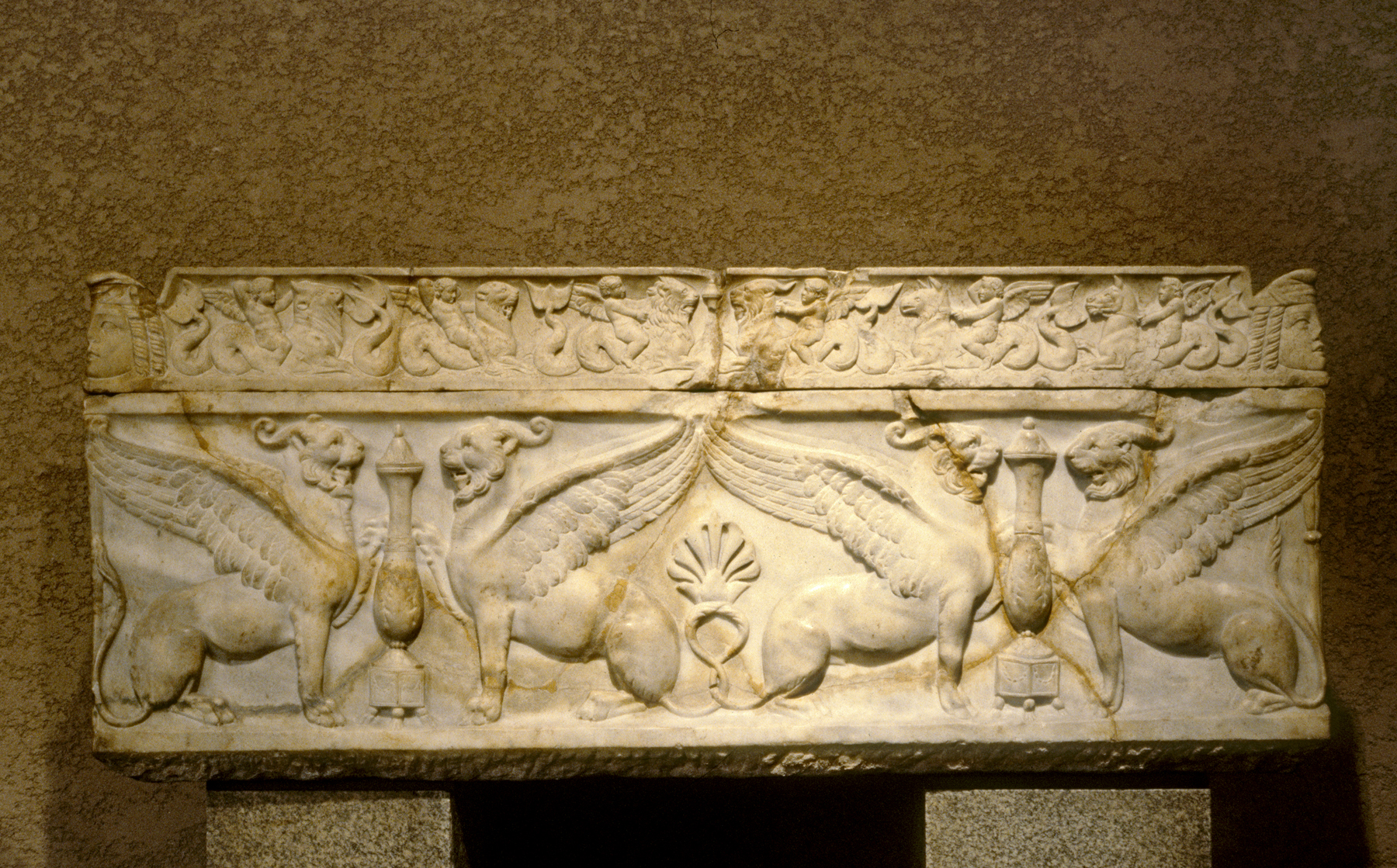Sarcophagus with Griffins
(Roman Empire )
Carved in relief on this sarcophagus, panther-griffins face one another, each raising a paw towards a central vase-like object used in the cult of Dionysus Sabazius. The motif is well known from imperial temples, where it appears as a symbol of deification and ascension to heaven. This imperial allusion reflects the high aspirations of the family to whom the tomb belongs. Along the lid, Eros figures ride fantastical sea-creatures.
Provenance
Provenance (from the French provenir, 'to come from/forth') is the chronology of the ownership, custody, or location of a historical object. Learn more about provenance at the Walters.
[Excavated from the so-called Licinian tomb, via Piave, Rome, 1885]; Clemente Maraini, 1885, by excavation; Don Marcello Massarenti, Rome, by 1894, by purchase [marble no. 7]; Henry Walters, Baltimore, 1902, by purchase; Walters Art Museum, 1931, by bequest.
Exhibitions
| 2005-2006 | Things With Wings: Mythological Figures in Ancient Greek Art. The Walters Art Museum, Baltimore. |
Conservation
| Date | Description | Narrative |
|---|---|---|
| 6/23/1961 | Treatment | cleaned |
| 7/20/1970 | Treatment | cleaned |
| 1/1/1992 | Technical Report | x-ray diffraction; other |
| 6/23/1998 | Examination | condition |
| 10/12/2015 | Treatment | Cleaned |
| 10/12/2015 | Treatment | Cleaned to remove modern graffiti |
Measurements
24 1/2 x 61 1/2 x 21 1/4 in. (62.2 x 156.2 x 54 cm)
Credit Line
Acquired by Henry Walters with the Massarenti Collection, 1902
Location in Museum
Accession Number
In libraries, galleries, museums, and archives, an accession number is a unique identifier assigned to each object in the collection.
In libraries, galleries, museums, and archives, an accession number is a unique identifier assigned to each object in the collection.
23.35


